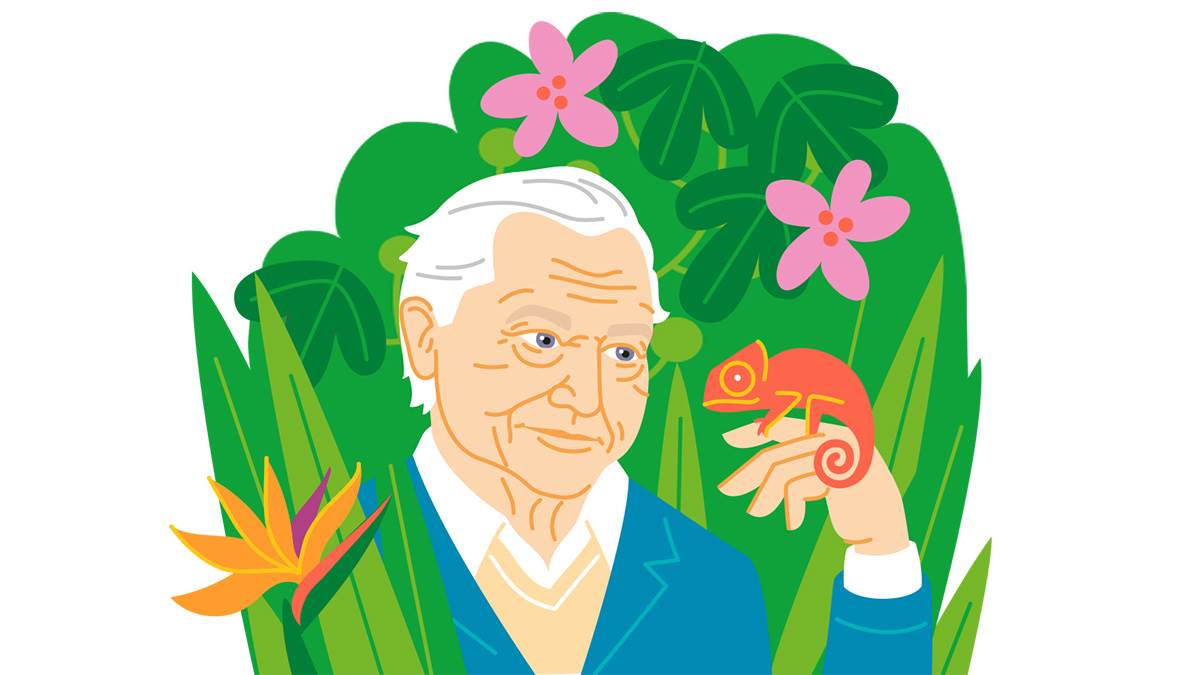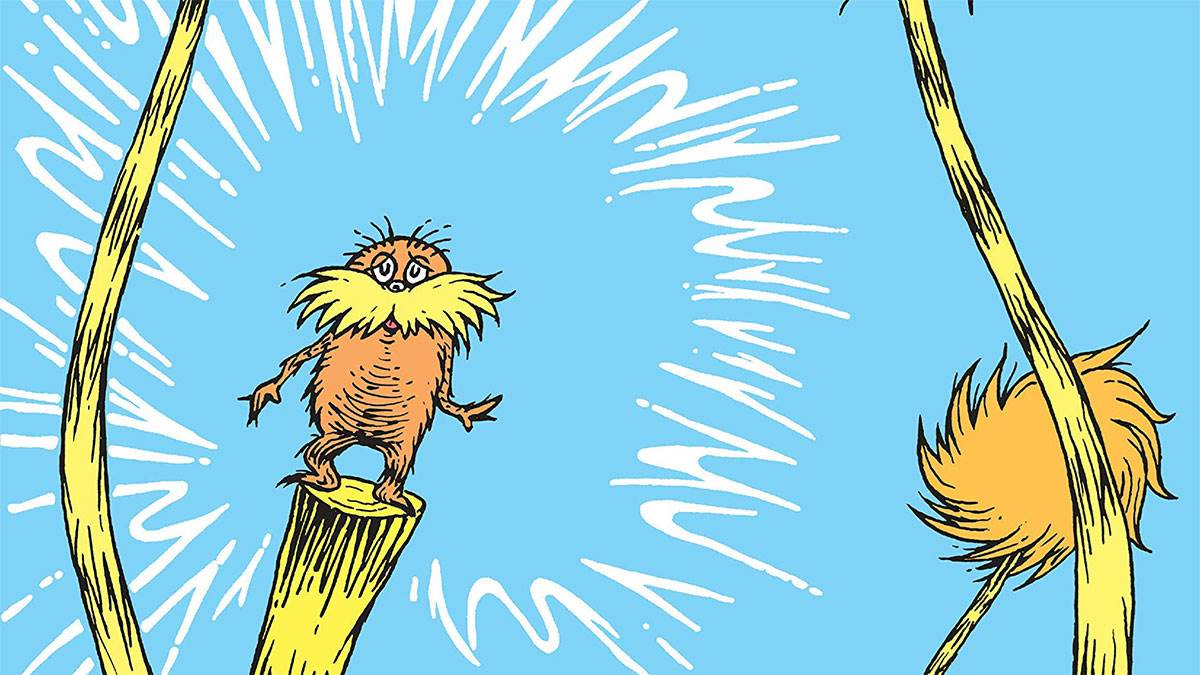5 storytellers getting to the heart of conservation
Published on: 19 November 2020 Author: Leisa Stewart-Sharpe
Author Leisa Stewart-Sharpe’s debut children’s book Blue Planet II makes a splash this month – the first of four major non-fiction books in collaboration with BBC Earth. She reflects on the storytellers who have inspired her love of nature, and the stories she now shares.

In August 2018, a little girl in a yellow raincoat sat down outside Sweden’s parliament (the Riksdag) holding four words that started a revolution: ‘school strike for climate’. I’m certain you’ve heard her name – it’s Greta Thunberg.
Fifteen-year-old Greta felt that a crucial story – climate change – was not being told. So, with four words, she decided to change that. By September 2019, Greta had inspired millions of people in 185 countries to strike for climate action. It’s become known as “the Greta effect”, and it got me thinking about the power of storytelling to inspire change.
Storytelling is something ALL of the environmentalists I most admire do beautifully. They speak from the heart, sharing tales from nature that make us laugh and cry. They tell us about the problems our planet’s facing, and then give us the knowledge and courage to do something about it.
So, aside from Greta and all of the students who bravely strike as part of Fridays For Future, here are a few environmentalists (I like to call them Earth Shakers) who have stories we should all care about.
Sir David Attenborough can make a worm as terrifying as a tiger.
 Illustration from Earth Heroes by Lily Dyu and Jackie Lay
Illustration from Earth Heroes by Lily Dyu and Jackie Lay
For over 60 years, natural historian Sir David Attenborough (aged 94) has been filming natural history blockbusters that make the ordinary, extraordinary. David’s affection for wildlife, started as a curious kid who’d explore the Leicester neighbourhood, prising open fossils and seeking out insects. Over time, that love of nature grew into a television career with the BBC. His TV shows are so beloved, that when Blue Planet II first aired in China, it temporarily slowed down the Internet!
Seen as the world’s foremost nature expert, Sir David would be the first to point out that he’s not an all-knowing naturalist – despite having studied natural science at university. Instead, it’s his curiosity for plants and animals that have made him a natural storyteller.
Today, it’s entirely possible that Sir David has explored more of Earth than any other human, and that puts him in the unique position of also being able to see how much it’s changed.
He believes that “no one will protect what they don’t care about, and no one will care about what they have never experienced.” That’s why, even at 94, David’s still travelling the world (and even joining Instagram!), so he can share nature’s stories with us all.
Dr Sylvia Earle LIVED on the bottom of the ocean!

In my book, that makes Sylvia very, VERY cool. It’s no wonder the 85-year-old has earned the nicknamed ‘Her Deepness’. Sylvia has led more than 100 ocean expeditions and logged more than 7,000 hours underwater. And it all started when 12 year old Sylvia moved to Florida and fell in love with the water.
Sylvia studied botany at university during the fifties – a time when becoming a scientist was frowned upon for women. Undeterred, Sylvia broke down those barriers and in 1964 boarded a ship heading for the Indian Ocean. She was the only woman in a crew of 70 men.
In 1970, Sylvia’s life aquatic reached new depths when she led an all-female crew to live for two weeks in an underwater laboratory to discover new species. Nine years later, she walked untethered along the seafloor, 381 metres down – as deep as the Empire State Building is tall. Told you she’s a legend!
Today Sylvia encourages people to think of fish not as seafood but as wildlife, to curb overfishing of vulnerable species. She’s also setting up ‘Hope Spots’ that work like national parks in the ocean. Because Sylvia knows: “no water, no life; no blue, no green.”
Jane Goodall’s stories make EVERYONE cry.
And that’s the whole point. In the 60 years that primatologist Jane Goodall (aged 86) has spent studying and protecting chimpanzees, she has learnt that it’s no good trying to convince the clever brain to do something – you must speak to the heart. It’s why when Jane tells a story, people who test on animals or clear forests for timber, are moved to tears.
Jane’s journey into the jungle began in London when she was one, when her father gave her a toy chimpanzee called Jubilee. Jubilee went everywhere with Jane, and together with books like The Jungle Book and Dr Dolittle, helped shaped her dreams for a life in Africa, talking with the animals. By age 23, Jane had worked hard to save up boat fare for Africa.
Jane’s travels in Africa led her to the shores of Gombe Stream in Tanzania, where she patiently studied chimpanzees. She witnessed things no human had ever seen – that chimps hunt for meat and can make tools to extract termites from their mounds.
At first, the scientific community didn’t welcome Jane’s discoveries – they felt she wasn’t scientific enough as she hadn’t yet gained a university degree. But her ground-breaking work soon gathered momentum, transforming our understanding of our closest animal relatives.
Today Jane continues to share stories from nature to help improve the lives of all living things.

But you don’t need to say something to inspire change. Just ask conservationist John Francis (aged 74).
On a foggy morning in 1971, two oil tankers collided in San Francisco Bay, spilling around 800,000 gallons of oil into the sea – more than you could hold in an Olympic swimming pool. As 25-year-old John Francis joined the clean-up crew, scrubbing the beaches and fighting to save oil-soaked wildlife, he made a decision that would change the course of his life. For 22 years, John would give up driving and riding in motor vehicles powered by oil. Instead, John began walking to get where he needed to go.
When John started walking, he thought everyone would follow. But as people stopped to ask him what he was doing, John got into arguments. John argued so much that on his 27th birthday, he decided to stop speaking for just one day – to “give it a rest”. That was the first time John felt that by not speaking, he truly listened and began to learn.
So long as John kept learning, he kept quiet. That’s how one day led to another day, then a year, and then 17 years of silence.
During this time, John walked, played the banjo, wrote, and studied the environment at university. Then in 1983, John began an epic seven-year journey on foot across America, from the west coast to the east coast, arriving in Washington DC in 1990 for the 20th Anniversary of Earth Day. On that day, John finally spoke.
Since then, John has become a United Nations Goodwill Ambassador and written oil spill regulations to protect America’s blue spaces. And along the way, he learned that by using his feet – not his words – he could tell a powerful story to the world about conservation.
“UNLESS someone like you cares a whole awful lot, nothing is going to get better. It’s not.”
 Illustration from The Lorax by Dr Seuss
Illustration from The Lorax by Dr Seuss
These beautiful words are from The Lorax, written by Theodor Geisel – you might know him as Dr Seuss. In 1970, when millions of people observed the first-ever Earth Day, Dr Seuss was inspired to write a story about a strange, moustached creature called the Lorax, who speaks for trees.
The Lorax was trying to protect the Truffula trees from the Once-ler, a business-man who wants to cut them down to knit thneeds – a product nobody needs. It’s believed the idea for the Lorax, came while Dr Seuss was in Kenya, learning about the patas monkeys that depend on the whistling thorn acacia trees, often cut down to make charcoal. The book has touched the heart of budding conservationists ever since.
Just like the Lorax, I don’t want a treeless future...
... or a future with a lifeless ocean. That’s why it’s been a great honour to reimagine blockbuster nature documentary Blue Planet II for a whole new generation, with illustrations by Emily Dove. (And did you see my Earth Shaker hero Sir David Attenborough has even written the foreword?!)
I hope you enjoy the stories in Blue Planet II and keep your eyes peeled for a whole book of Earth Shakers coming in 2021. Remember, stories are powerful things, and the more we share them, the more people we can inspire to protect our Blue Planet.

Enter our competition to win a gorgeous bundle of books for young eco-warriors
Author Leisa Stewart-Sharpe and illustrator Emily Dove's book, Blue Planet II, is the first in a series of four non-fiction books for children about the natural world and is available now. Follow Leisa on Twitter and Instagram and Emily on Twitter and Instagram.
Books for budding conservationists
Our pick of the top books for young readers who want to help protect the natural world.
Nature non-fiction (younger children)
From flora- and fauna-themed early learning books to detailed studies of species and habitats, these non-fiction nature books are perfect for any young inquisitive minds.
Nature non-fiction booklist (older children)
Non-fiction books about nature are great for older children, from engaging reluctant readers to inspiring budding environmentalists.
Favourite books about the environment (younger children)
From climate change to animal conservation, these picture books, poetry collections, novels and graphic novels will encourage children and young people to think about and discuss pressing issues about the environment.
Topics: Non-fiction, Animals, Environment, Nature, Features







